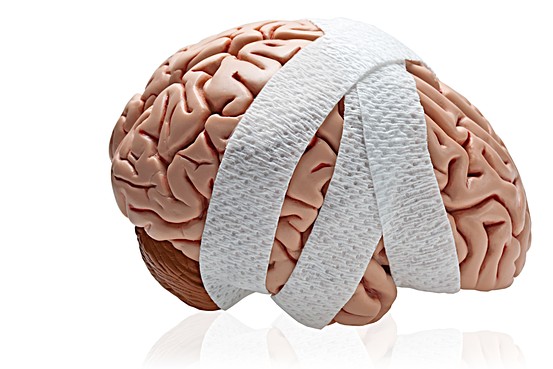copyright by www.eurekalert.org
Making long-term damage of concussions visible
Scientists have used a unique computational technique that sifts through big data to identify a subset of concussion patients with normal brain scans, who may deteriorate months after diagnosis and develop confusion, personality changes and differences in vision and hearing, as well as post-traumatic stress disorder. This finding, which is corroborated by the identification of molecular biomarkers, is paving the way to a precision medicine approach to the diagnosis and treatment of patients with traumatic brain injury.
Finding underlying patterns in patient data
Investigators headed by scientists at UC San Francisco and its partner institution Zuckerberg San Francisco General Hospital and Trauma Center (ZSFG) analyzed an unprecedented array of data, using a machine learning tool called topological data analysis (TDA), which “visualizes” diverse datasets across multiple scales, a technique that has never before been used to study traumatic brain injury. TDA, which employs mathematics derived from topology, draws on the philosophy that all data has an underlying shape. It creates a summary or compressed representation of all the data points using algorithms that map patient data into a multidimensional space. The new research relied on a TDA platform developed by Ayasdi, an advanced analytics company based in Palo Alto, Calif. “TDA is a type of machine intelligence that provides a way to easily visualize patient differences across the full spectrum of traumatic brain injury from concussion to coma,” said senior co-author, Adam Ferguson, PhD, associate professor in the Department of Neurological Surgery and a member of the UCSF Weill Institute for Neurosciences. “This has potential to transform diagnosis and predict outcome by providing a new level of precision.”
 Immense impact on the treatment of head injuries
Immense impact on the treatment of head injuries
Traumatic brain injury results in approximately 52,000 deaths, 257,000 hospitalizations and 2.2 million emergency department visits in the United States annually, according to the Centers for Disease Control and Prevention’s Injury Center. These injuries can lead to widespread lesions throughout the brain’s white matter, as well as a “cascade of secondary injury mechanisms that evolve over times.” The heterogeneity of the manifestations of these secondary injuries is one significant obstacle that thwarts the development of new treatments, the authors note in their paper. […]
read more – copyright by www.eurekalert.org


copyright by www.eurekalert.org
Making long-term damage of concussions visible
Scientists have used a unique computational technique that sifts through big data to identify a subset of concussion patients with normal brain scans, who may deteriorate months after diagnosis and develop confusion, personality changes and differences in vision and hearing, as well as post-traumatic stress disorder. This finding, which is corroborated by the identification of molecular biomarkers, is paving the way to a precision medicine approach to the diagnosis and treatment of patients with traumatic brain injury.
Finding underlying patterns in patient data
Investigators headed by scientists at UC San Francisco and its partner institution Zuckerberg San Francisco General Hospital and Trauma Center (ZSFG) analyzed an unprecedented array of data, using a machine learning tool called topological data analysis (TDA), which “visualizes” diverse datasets across multiple scales, a technique that has never before been used to study traumatic brain injury. TDA, which employs mathematics derived from topology, draws on the philosophy that all data has an underlying shape. It creates a summary or compressed representation of all the data points using algorithms that map patient data into a multidimensional space. The new research relied on a TDA platform developed by Ayasdi, an advanced analytics company based in Palo Alto, Calif. “TDA is a type of machine intelligence that provides a way to easily visualize patient differences across the full spectrum of traumatic brain injury from concussion to coma,” said senior co-author, Adam Ferguson, PhD, associate professor in the Department of Neurological Surgery and a member of the UCSF Weill Institute for Neurosciences. “This has potential to transform diagnosis and predict outcome by providing a new level of precision.”
Traumatic brain injury results in approximately 52,000 deaths, 257,000 hospitalizations and 2.2 million emergency department visits in the United States annually, according to the Centers for Disease Control and Prevention’s Injury Center. These injuries can lead to widespread lesions throughout the brain’s white matter, as well as a “cascade of secondary injury mechanisms that evolve over times.” The heterogeneity of the manifestations of these secondary injuries is one significant obstacle that thwarts the development of new treatments, the authors note in their paper. […]
read more – copyright by www.eurekalert.org
Share this: